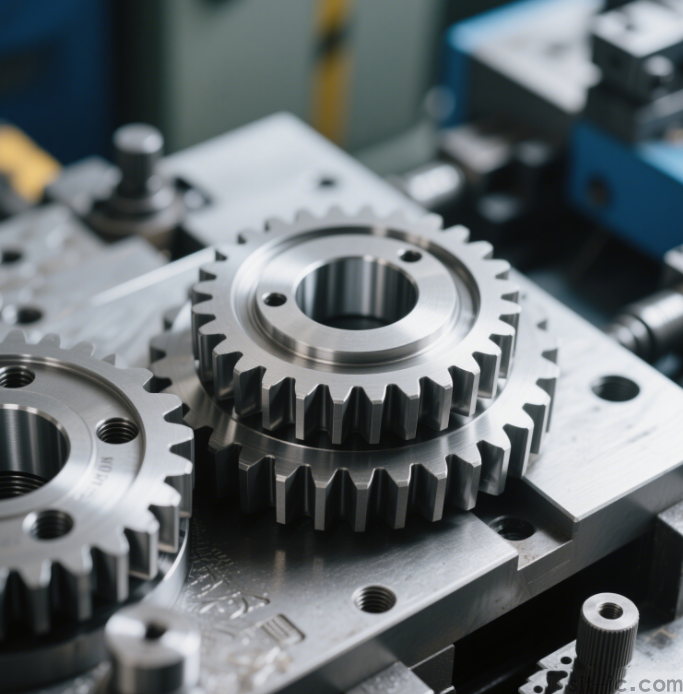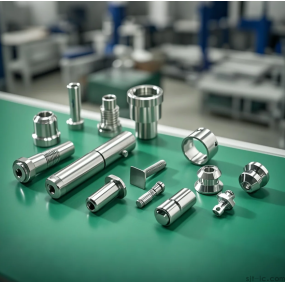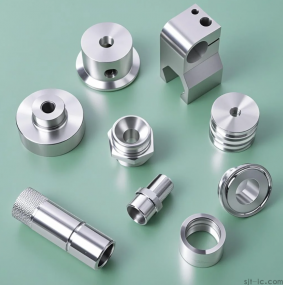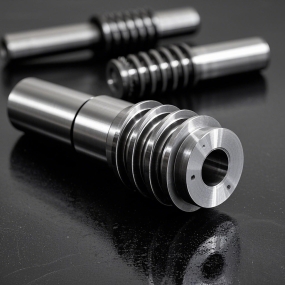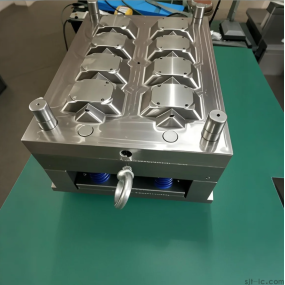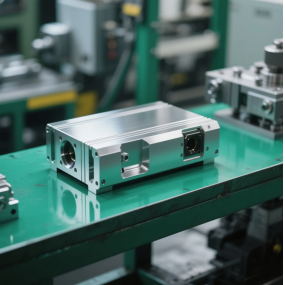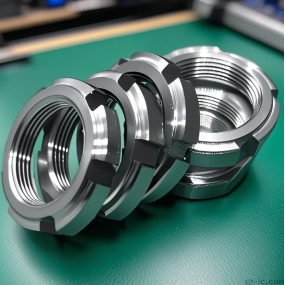〖CNC Gear Machining Process Steps〗
In short, it follows four steps: Rough Machining → Finish Machining → Heat Treatment → Polishing!
1. First, use a lathe to mill the rough contour of the gear blank (rough machining), leaving a small amount of machining allowance.
2. Then, use a finish milling cutter to refine the tooth profile to ensure meshing accuracy.
3. Conduct heat treatment such as quenching to enhance hardness.
4. Finally, perform polishing to reduce surface roughness.
A tip: For thin-walled gears, machine the inner hole first before refining the outer teeth; otherwise, it is prone to tool vibration and tooth chipping!
〖How Much Does a CNC-Machined Gear Cost?〗
The cost depends on material, precision, and production volume!
- A single ordinary steel gear usually costs 200-500 RMB, and the unit price can be reduced to less than 100 RMB for mass production.
- High-precision helical gears may cost over 1,000 RMB each because they require 5-axis CNC machines.
Here’s an example: For a steel gear with a modulus of 2 and a tolerance of ±0.05mm, the unit price is about 120 RMB for a batch of 100 pieces. If surface nitriding treatment is added, an additional 20% cost will be incurred 😅.
For small-batch production, 3D printing is more cost-effective; CNC Machining is better suited for large-batch production!
〖CNC Machining Parameters for Small-Size Gears〗
- Spindle speed: 3000-5000 rpm
- Feed rate: 0.1 mm/tooth
For small-size gears (e.g., modulus < 1), use small-diameter milling cutters to avoid tooth extrusion. Recommended parameters are as follows:
- Rough machining: Speed = 3000 rpm, Feed rate = 0.15 mm/tooth, Cutting depth = 0.5 mm
- Finish machining: Speed = 5000 rpm, Feed rate = 0.05 mm/tooth, Cutting depth = 0.1 mm
Key point: Ensure an adequate supply of cutting fluid; otherwise, the tool will wear out quickly and the tooth surface finish will be affected!
〖CNC Gear Machining Precision Control〗
The core lies in tool compensation and machine calibration! Precision issues usually arise from the following reasons:
1. Tool wear: Check the cutting edge every 20 workpieces processed.
2. Loose clamping: Hydraulic clamps provide more stability than mechanical clamps.
3. Thermal deformation: Pause the machine for 10 minutes to cool down midway during machining.
Personal test result: Regularly measure the machine’s positioning accuracy with a laser calibrator, which can directly reduce the tolerance to within ±0.01 mm!
〖Precautions for CNC Machining of Quenched Gears〗
After quenching, the gear must undergo annealing before finish machining! Direct milling will not only easily cause tooth cracking but also lead to severe tool chipping (to the point of being unrecognizable) 😂.
The correct sequence is: Rough Machining → Quenching → Annealing → Finish Machining → Secondary Polishing.
Use oil-based cutting fluid; water-based fluid tends to make the quenched layer brittle. Additionally, for thin gears, perform stress relief first (e.g., aging treatment); otherwise, the deformation will be so severe that it’s frustrating!
Personal Insight
CNC machining for gears is truly efficient, but beginners often make mistakes—for example, randomly setting parameters resulting in a tooth surface as rough as sandpaper!
In fact, paying more attention to long-tail keywords to identify user needs (such as "remedies for CNC gear machining tool breakage") can bring accurate traffic and make it easier to rank well. Next time before programming, search for how users ask questions; it will definitely broaden your thinking! ✨
If you need, I can help you organize an English-Chinese comparison table of core CNC gear machining terms to make it easier for you to reference in cross-border communication or document reading.
 English
English » »
» »
 Spanish
Spanish Arabic
Arabic French
French Portuguese
Portuguese Belarusian
Belarusian Japanese
Japanese Russian
Russian Malay
Malay Icelandic
Icelandic Bulgarian
Bulgarian Azerbaijani
Azerbaijani Estonian
Estonian Irish
Irish Polish
Polish Persian
Persian Boolean
Boolean Danish
Danish German
German Filipino
Filipino Finnish
Finnish Korean
Korean Dutch
Dutch Galician
Galician Catalan
Catalan Czech
Czech Croatian
Croatian Latin
Latin Latvian
Latvian Romanian
Romanian Maltese
Maltese Macedonian
Macedonian Norwegian
Norwegian Swedish
Swedish Serbian
Serbian Slovak
Slovak Slovenian
Slovenian Swahili
Swahili Thai
Thai Turkish
Turkish Welsh
Welsh Urdu
Urdu Ukrainian
Ukrainian Greek
Greek Hungarian
Hungarian Italian
Italian Yiddish
Yiddish Indonesian
Indonesian Vietnamese
Vietnamese Haitian Creole
Haitian Creole Spanish Basque
Spanish Basque

